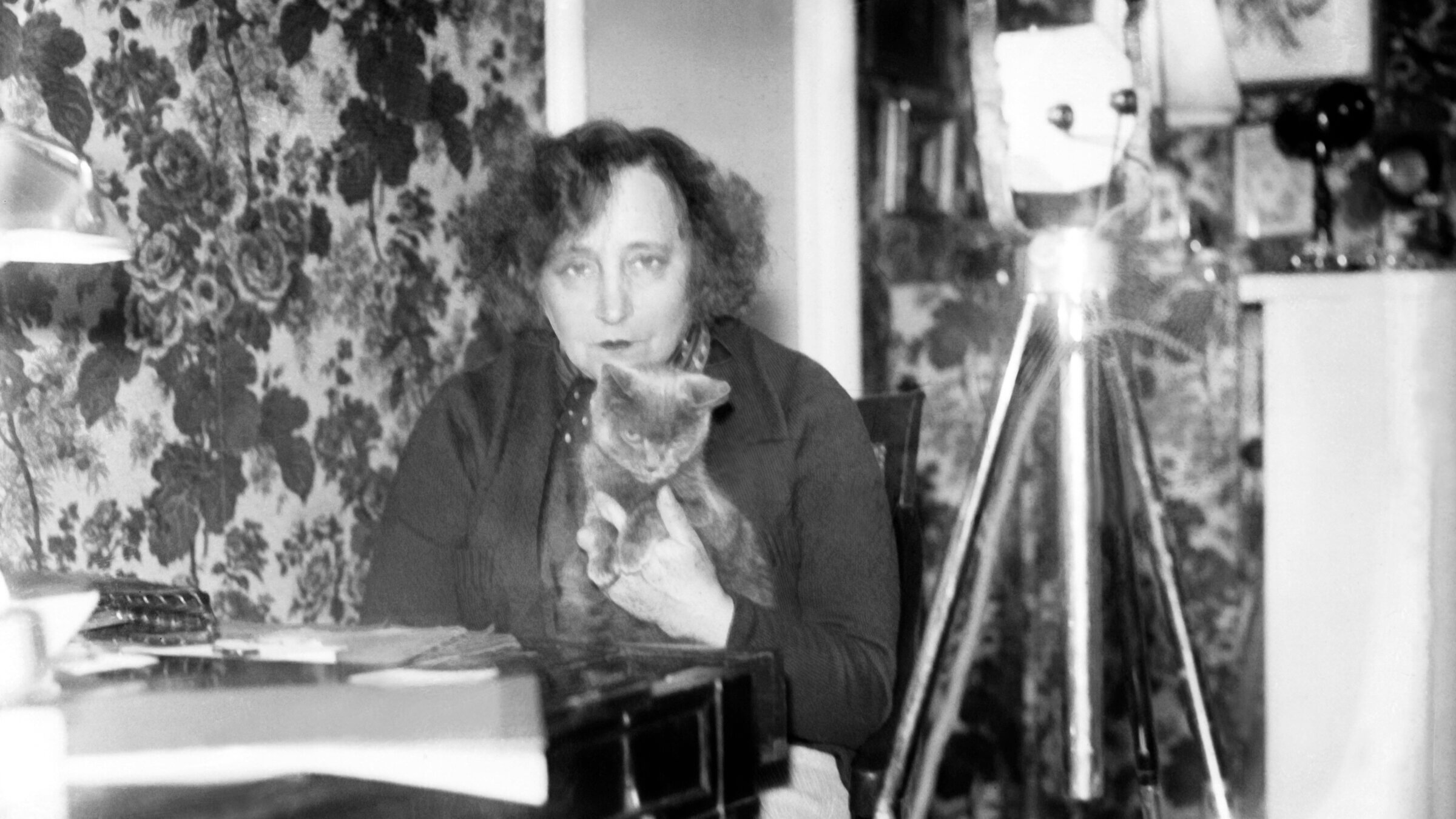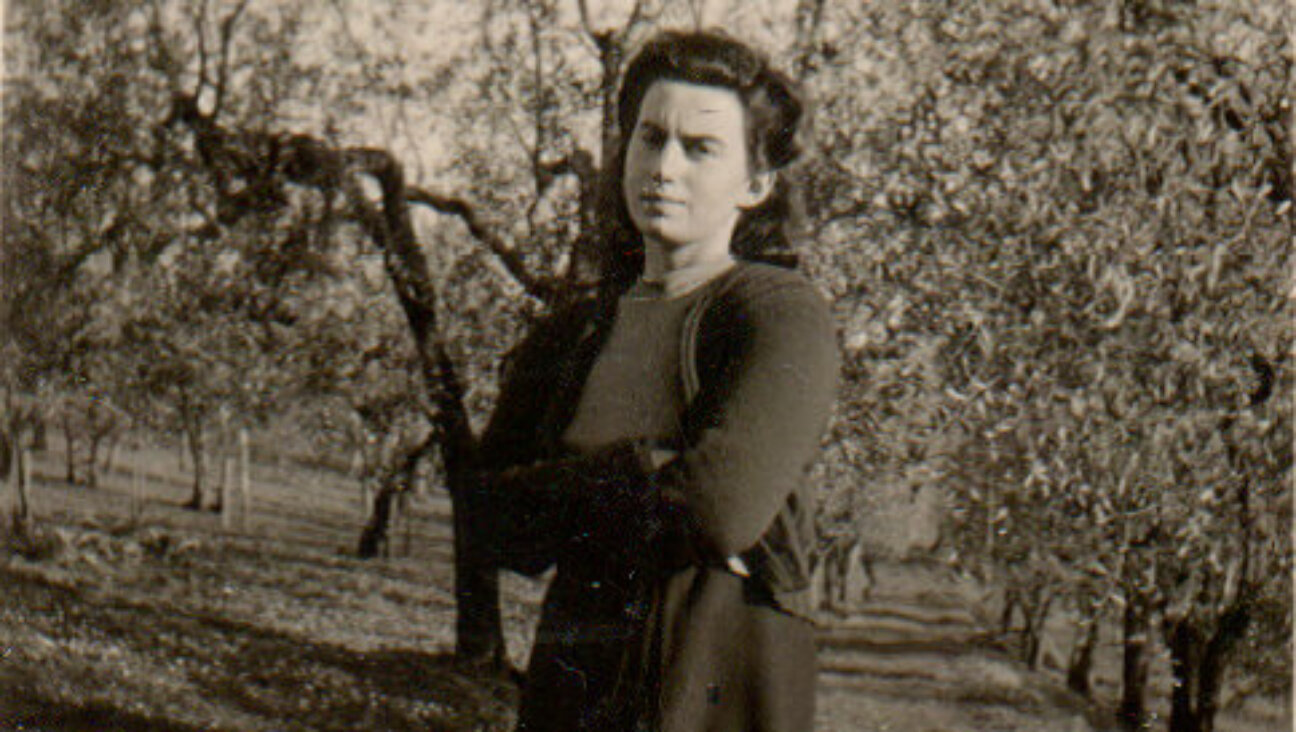She wrote ‘Gigi’ and inspired a Keira Knightley movie — was she also a Nazi collaborator?
To save her husband from the Nazis, did Colette become one?

French novelist Colette in 1940s Paris. Photo by Getty Images
The saga of the French author Colette, who wrote the novella Gigi and whose life inspired a 2018 film starring Keira Knightley, continues to fascinate readers eager to debate her conduct during the Nazi occupation of France.
A sensualist who relished food, household pets, the countryside, and often-bittersweet love affairs, Colette, who was born 150 years ago in 1873, ardently campaigned with Nazi officials and French collaborators of Hitler to spare the life of her third husband, the Dutch Jewish pearl trader Maurice Goudeket. Yet a new study by historian Bénédicte Vergez-Chaignon asks whether these ultimately successful efforts brought Colette close to Nazi collaboration herself.
Vergez-Chaignon observes that throughout the war, Colette published articles in some of the most extreme French antisemitic collaborationist journals such as Je suis partout (“I Am Everywhere”), a weekly that French resistants derisively dubbed Je chie partout (“I defecate everywhere”).
In a September 1942 issue of Je suis partout, the French intellectual Robert Brasillach openly called for the murder of all Jewish men, women, and children in France: “We must get rid of Jews altogether, including the little ones.”
This was one publication, among several, where Colette’s wartime articles appeared. To be sure, her writings were more benign, including diary-like accounts of the hardships of occupied Paris with food shortages and a thriving black market.
In these articles, Colette never mentioned the words “occupation,” “Nazi,” or “German,” nor did she refer to Marshal Pétain, head of the collaborationist regime of Vichy France.
One arguable exception to this discretion was Colette’s serialized 1941 novel Julie de Carneilhan, which focused on a despicable Jewish character who “lacks class,” the rich new wife of the eponymous heroine’s ex-husband.
Though some novelists of this era, including even Jewish ones like Irène Némirovsky (later murdered in Auschwitz), included antisemitic stereotypes in fiction, doing so in 1941 in the collaborationist daily Comœdia was an ill-advised gesture.
Some readers argue that Colette had empathy only for a single Jew, her husband. But she also donated money to Suzanne Spaak, a Paris neighbor who smuggled Jewish children to safety until Spaak was arrested by the Gestapo and shot in her prison cell shortly before the liberation of Paris.
Colette herself was an unlikely candidate for any such heroics. After a turbulent life, by the 1940s Colette was aging and hobbled with arthritis. She spent most days curled up on a bed in her Paris apartment in the dank central Palais Royal neighborhood.
After Goudeket was arrested in a roundup of prominent Jews, Colette used her influence as a celebrated writer to contact every possible ally. After Goudeket was freed from temporary detention at Royallieu-Compiègne internment camp in northern France, she and Goudeket wrote gracious thank-you notes to anyone who might have been helpful.
One such recipient of Colette’s gratitude in a February 1942 letter was Karl Epting, head of the cultural department of the German Embassy. An ardent Nazi, Epting worked to convince the French people of the necessity of murdering all the Jews. The same year that Epting received Colette’s missive, he demanded that the French military segregate Jewish children in schools from French classmates, to facilitate their arrest and deportation to death camps.
Even in literature, Epting’s taste was extreme; he was a rabid fan of Louis-Ferdinand Céline, whom most Nazis with literary pretensions found crudely deranged, as when Céline charged that Pope Pius XII and Hitler must both be Jews, because neither was making a sufficient effort to exterminate the Jewish people.
While lauding such allies who even remotely may have helped her and Goudeket, Colette was prudent about not publicly taking sides in the war. She was aware of the continuing vulnerability of her husband, prone to future detention.
So when Julien Cain, an old friend and former French Jewish director of the National Library, was arrested and sent to the Buchenwald concentration camp, Colette refused to sign a petition asking for Cain to be freed.
Instead, she discreetly had food parcels sent to Cain in prison. Pleading her age and infirmity, Colette avoided attending lavish Nazi cultural and social events that her less wary collaborationist friends, such as Jean Cocteau and Sacha Guitry, flocked to.
In any case, the Nazi regime never fully approved of Colette, as her much-discussed bisexuality, semi-nude dancing onstage, and other behavior during her younger years failed to conform with Nazi ideology about traditional female roles.
Of course, Colette herself was no feminist, telling the German Jewish author Walter Benjamin in 1927 that she disapproved of women participating in politics, on the grounds that “each month … there are days when [women] are irritable, uncontrolled, unpredictable.”
By contrast, her daughter Colette de Jouvenel, based in Corrèze, a center of resistance in southwestern France, had no such reservations, actively helping refugee families while romancing Simy Wertheim, a Jewish resistant.
After the war, as a journalist, Colette de Jouvenel reported on the return of Holocaust survivors from Ravensbrück concentration camp to a Paris railway station. As a follow-up to the stories she heard during this assignment, she went to Germany for three weeks in 1945 to investigate wartime antisemitic atrocities.
The photos she took on this trip were rejected for publication by the resistance newspaper Fraternité on the grounds that they would upset readers excessively. This intrepid reporter’s mother was informed of all her projects, but even before this, Colette had some idea of Jewish ordeals in Paris.
Already in the 1920s, she had socialized with the Algerian Jewish author Elissa Rhaïs (born Rosine Boumendil), who adopted the persona of a Muslim escapee from a harem to better thrill readers.
During the occupation, in 1942, Colette was surely aware when a despairing Polish Jewish friend, Michalina Hertz, known as Misz, committed suicide in Paris a few days before the Vél d’Hiv roundup, the largest French deportation of Jews during the Holocaust. Hertz, who had posed for the painter Édouard Vuillard, was married to a playwright who successfully adapted Colette’s works for the stage.
In response to the loss of such longtime associates, in 1944, Colette published the backward-looking Gigi about a young Parisian groomed for a career as a courtesan. This discretion may have had its origins decades before, literary historian Elizabeth Brunazzi posited, when Colette served as ghostwriter for her Jew-hating, anti-Dreyfusard first husband.
Although Colette later wrote about this time of servitude, she omitted full details of the real-life domestic abuse involved. Fans such as Robert Brasillach lauded her “silence.” When Brasillach was sentenced to death for his wartime Nazi collaboration, at first Colette refused to sign a letter asking that his life be spared.
After her friend Jean Cocteau insisted, she finally signed, but to no avail. Brasillach was executed for “intellectual crimes” such as advocating collaborationism, denunciation, and inciting murders.
Cocteau once referred to Colette as the “only person in the world who can make soap bubbles from mud.”
Whether Colette has managed to perform this feat with the mire of France’s Nazi occupation remains an open question on her 150th birthday.






















